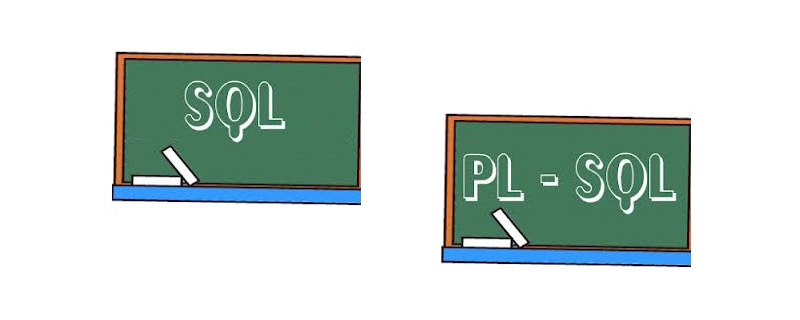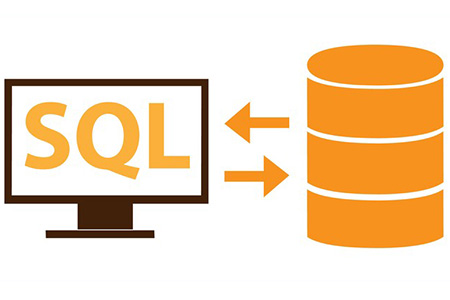Simple comparison between SQL and PL/SQL
SQL and PL/SQL are both relational database languages, what is the difference between them? In this article, I will give you a brief comparison between SQL and PL/SQL, and introduce the differences between SQL and PL/SQL. I hope it will be helpful to you.

What is SQL?
SQL (Structured Query Language) is a standard database language used to create, maintain and retrieve relational databases. [Recommended related video tutorials: MySQL Tutorial]
Advantages of SQL:
1. It is a high-level language with advantages over procedural languages. Greater levels of abstraction.
2. It enables system personnel and end users to handle the many database management systems available.

3. Portability. This type of migration may be required when the underlying DBMS needs to be upgraded or changed.
4. SQL can be embedded in the syntax of many other languages, such as C/C, Java, Perl, Python, PHP, etc. It is a data-oriented declarative language.
What is PLSQL?
PLSQL is a block structured language, a database-oriented programming language, and a procedural language. It is an extension of SQL, it saves SQL statements in its syntax, it extends SQL with procedural functions.
Advantages of PL/SQL:
1. Block structure: It consists of code blocks, and they can be nested in each other. Each block forms a unit of task or logical module. PL/SQL blocks are usually retained in the message and reused.
2. Procedural language capability: It consists of procedural language constructs, such as conditional statements (if else statements) and loops (FOR loops).
3. Better performance: PL/SQL engine processes multiple SQL statements simultaneously with one block, thereby reducing network traffic.
4. Error handling: PL/SQL effectively handles errors or exceptions during the execution of PL/SQL programs.
The main difference between SQL and PL/SQL

1. SQL executes a single query or execution at a time Single insert, update, delete. Pl/SQL, on the other hand, executes one block of code at a time for performing multiple select, insert, update, delete operations.
2. SQL is a database structured query language. While PL/SQL is a database programming language using SQL; used for writing complete programs using variables, loops, operators, etc.
3. SQL is used to write queries, using DDL (data definition language), DML (data manipulation language) statements; PL/SQL is used to write program blocks, and its syntax includes procedures, functions, triggers, package, variable.
4. SQL query is used to retrieve data from the database; it can also perform operations such as adding, deleting, and modifying. Rather, PL/SQL is used to create applications that can display information retrieved by SQL.
5. SQL is a declarative language and can be embedded in PLSQL; PLSQL is a procedural language and can be embedded in SQL.
6. SQL is data-oriented and can interact directly with the database server. PL/SQL is application-oriented and does not interact with the database server.
7. SQL does not support control structures; PL/SQL can use control structures, such as for loops, while loops
8. SQL is mainly used to manipulate data; PL/SQL is mainly used to Create an application.
The above is the entire content of this article, I hope it will be helpful to everyone's study. For more exciting content, you can pay attention to the relevant tutorial columns of the PHP Chinese website! ! !
The above is the detailed content of Simple comparison between SQL and PL/SQL. For more information, please follow other related articles on the PHP Chinese website!

Hot AI Tools

Undresser.AI Undress
AI-powered app for creating realistic nude photos

AI Clothes Remover
Online AI tool for removing clothes from photos.

Undress AI Tool
Undress images for free

Clothoff.io
AI clothes remover

AI Hentai Generator
Generate AI Hentai for free.

Hot Article

Hot Tools

Notepad++7.3.1
Easy-to-use and free code editor

SublimeText3 Chinese version
Chinese version, very easy to use

Zend Studio 13.0.1
Powerful PHP integrated development environment

Dreamweaver CS6
Visual web development tools

SublimeText3 Mac version
God-level code editing software (SublimeText3)

Hot Topics
 1378
1378
 52
52
 MySQL: Simple Concepts for Easy Learning
Apr 10, 2025 am 09:29 AM
MySQL: Simple Concepts for Easy Learning
Apr 10, 2025 am 09:29 AM
MySQL is an open source relational database management system. 1) Create database and tables: Use the CREATEDATABASE and CREATETABLE commands. 2) Basic operations: INSERT, UPDATE, DELETE and SELECT. 3) Advanced operations: JOIN, subquery and transaction processing. 4) Debugging skills: Check syntax, data type and permissions. 5) Optimization suggestions: Use indexes, avoid SELECT* and use transactions.
 How to open phpmyadmin
Apr 10, 2025 pm 10:51 PM
How to open phpmyadmin
Apr 10, 2025 pm 10:51 PM
You can open phpMyAdmin through the following steps: 1. Log in to the website control panel; 2. Find and click the phpMyAdmin icon; 3. Enter MySQL credentials; 4. Click "Login".
 MySQL and SQL: Essential Skills for Developers
Apr 10, 2025 am 09:30 AM
MySQL and SQL: Essential Skills for Developers
Apr 10, 2025 am 09:30 AM
MySQL and SQL are essential skills for developers. 1.MySQL is an open source relational database management system, and SQL is the standard language used to manage and operate databases. 2.MySQL supports multiple storage engines through efficient data storage and retrieval functions, and SQL completes complex data operations through simple statements. 3. Examples of usage include basic queries and advanced queries, such as filtering and sorting by condition. 4. Common errors include syntax errors and performance issues, which can be optimized by checking SQL statements and using EXPLAIN commands. 5. Performance optimization techniques include using indexes, avoiding full table scanning, optimizing JOIN operations and improving code readability.
 How to recover data after SQL deletes rows
Apr 09, 2025 pm 12:21 PM
How to recover data after SQL deletes rows
Apr 09, 2025 pm 12:21 PM
Recovering deleted rows directly from the database is usually impossible unless there is a backup or transaction rollback mechanism. Key point: Transaction rollback: Execute ROLLBACK before the transaction is committed to recover data. Backup: Regular backup of the database can be used to quickly restore data. Database snapshot: You can create a read-only copy of the database and restore the data after the data is deleted accidentally. Use DELETE statement with caution: Check the conditions carefully to avoid accidentally deleting data. Use the WHERE clause: explicitly specify the data to be deleted. Use the test environment: Test before performing a DELETE operation.
 How to use AWS Glue crawler with Amazon Athena
Apr 09, 2025 pm 03:09 PM
How to use AWS Glue crawler with Amazon Athena
Apr 09, 2025 pm 03:09 PM
As a data professional, you need to process large amounts of data from various sources. This can pose challenges to data management and analysis. Fortunately, two AWS services can help: AWS Glue and Amazon Athena.
 How to use single threaded redis
Apr 10, 2025 pm 07:12 PM
How to use single threaded redis
Apr 10, 2025 pm 07:12 PM
Redis uses a single threaded architecture to provide high performance, simplicity, and consistency. It utilizes I/O multiplexing, event loops, non-blocking I/O, and shared memory to improve concurrency, but with limitations of concurrency limitations, single point of failure, and unsuitable for write-intensive workloads.
 MySQL: An Introduction to the World's Most Popular Database
Apr 12, 2025 am 12:18 AM
MySQL: An Introduction to the World's Most Popular Database
Apr 12, 2025 am 12:18 AM
MySQL is an open source relational database management system, mainly used to store and retrieve data quickly and reliably. Its working principle includes client requests, query resolution, execution of queries and return results. Examples of usage include creating tables, inserting and querying data, and advanced features such as JOIN operations. Common errors involve SQL syntax, data types, and permissions, and optimization suggestions include the use of indexes, optimized queries, and partitioning of tables.
 phpmyadmin connection mysql
Apr 10, 2025 pm 10:57 PM
phpmyadmin connection mysql
Apr 10, 2025 pm 10:57 PM
How to connect to MySQL using phpMyAdmin? The URL to access phpMyAdmin is usually http://localhost/phpmyadmin or http://[your server IP address]/phpmyadmin. Enter your MySQL username and password. Select the database you want to connect to. Click the "Connection" button to establish a connection.




